Keeping your home in top shape often involves tasks you might not think about daily, but they play a crucial role in its overall health. Gutter cleaning definitely falls into this category. It might seem like a chore, and honestly, it can be. However, maintaining clear gutters prevents costly damage, protects your foundation, and keeps your home looking its best. As your home organization coach, I want to empower you with the knowledge and confidence to tackle this essential home maintenance task safely and effectively.
Many busy homeowners, renters, and apartment dwellers postpone gutter cleaning because it feels daunting, dangerous, or just plain messy. You might wonder when the best time is, what tools you need, or if you should even attempt it yourself. This comprehensive guide answers all those questions, providing practical, actionable insights for successful gutter cleaning, whether you choose a DIY approach or decide to hire a professional. We focus on realistic solutions that fit your life and budget, ensuring your home stays comfortable and protected.
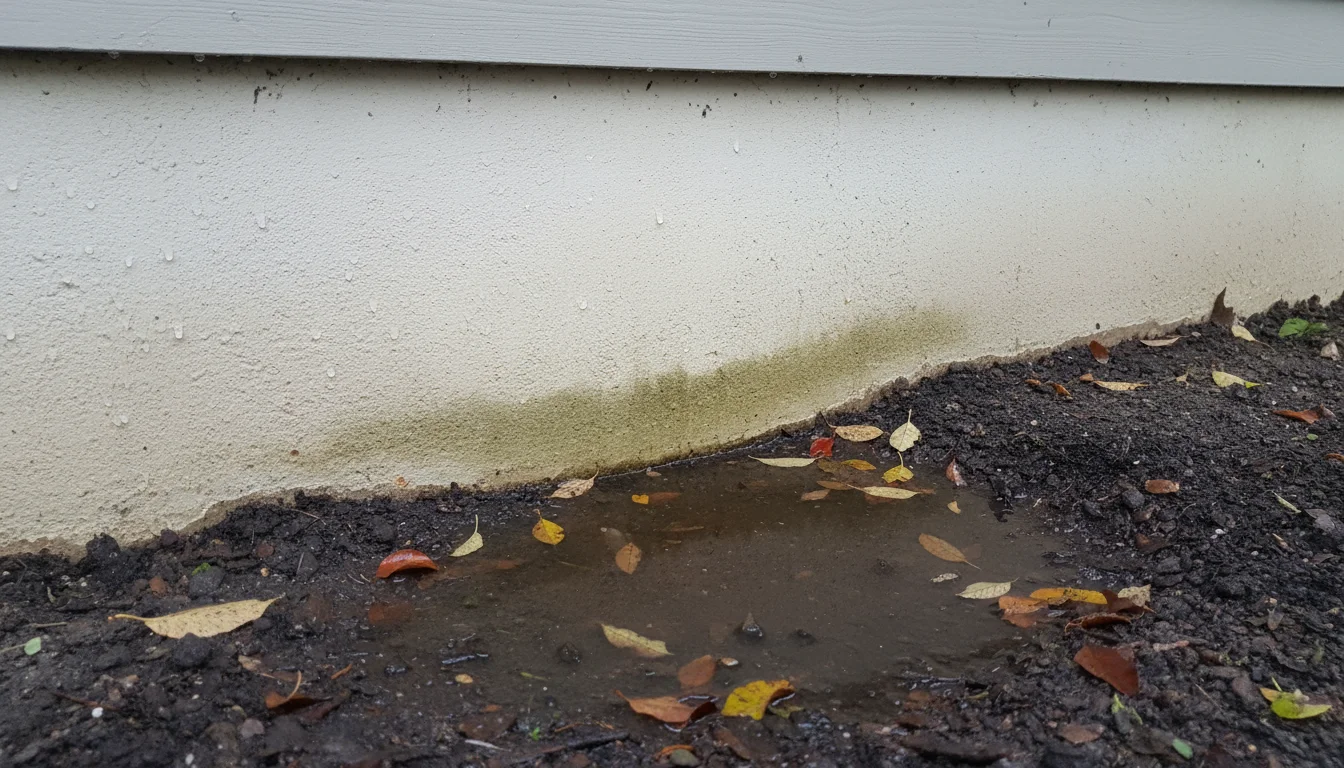
Why Gutter Cleaning Is Essential for Your Home
Your home’s gutter system serves a vital purpose: it channels rainwater away from your roof, siding, windows, and foundation. When gutters become clogged with leaves, twigs, dirt, and other debris, they cannot perform this job effectively. This seemingly small oversight leads to a cascade of expensive and frustrating problems. Understanding these potential issues clearly demonstrates why regular gutter cleaning is a non-negotiable part of home maintenance.
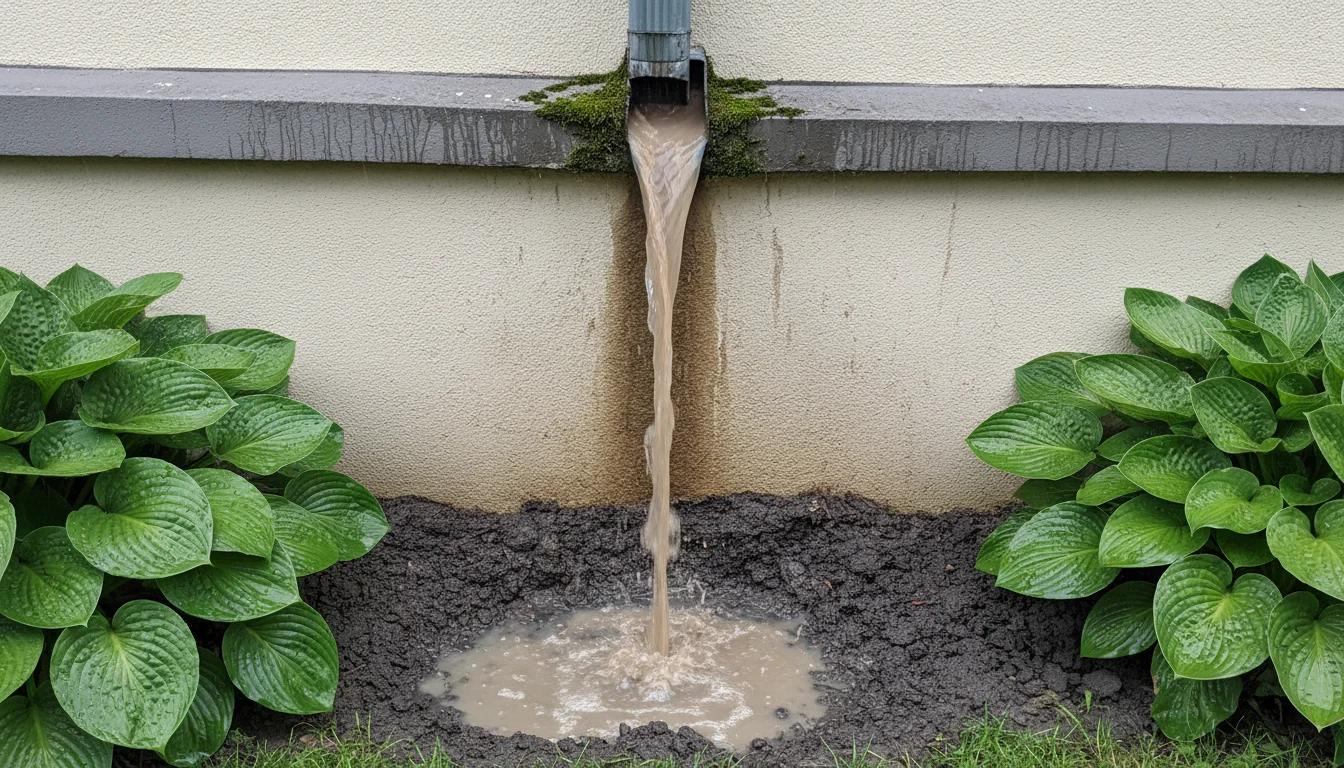
Protecting Your Foundation from Water Damage
One of the most significant risks of clogged gutters involves your home’s foundation. When water overflows from blocked gutters, it pours directly down around your foundation. This excess water saturates the soil, creating hydrostatic pressure against the foundation walls. Over time, this pressure causes cracks, leading to leaks in your basement or crawl space. Foundation repairs represent one of the most expensive home repairs you can face, often costing thousands of dollars. Preventing water buildup around the foundation through proper gutter care saves you substantial money and stress in the long run.
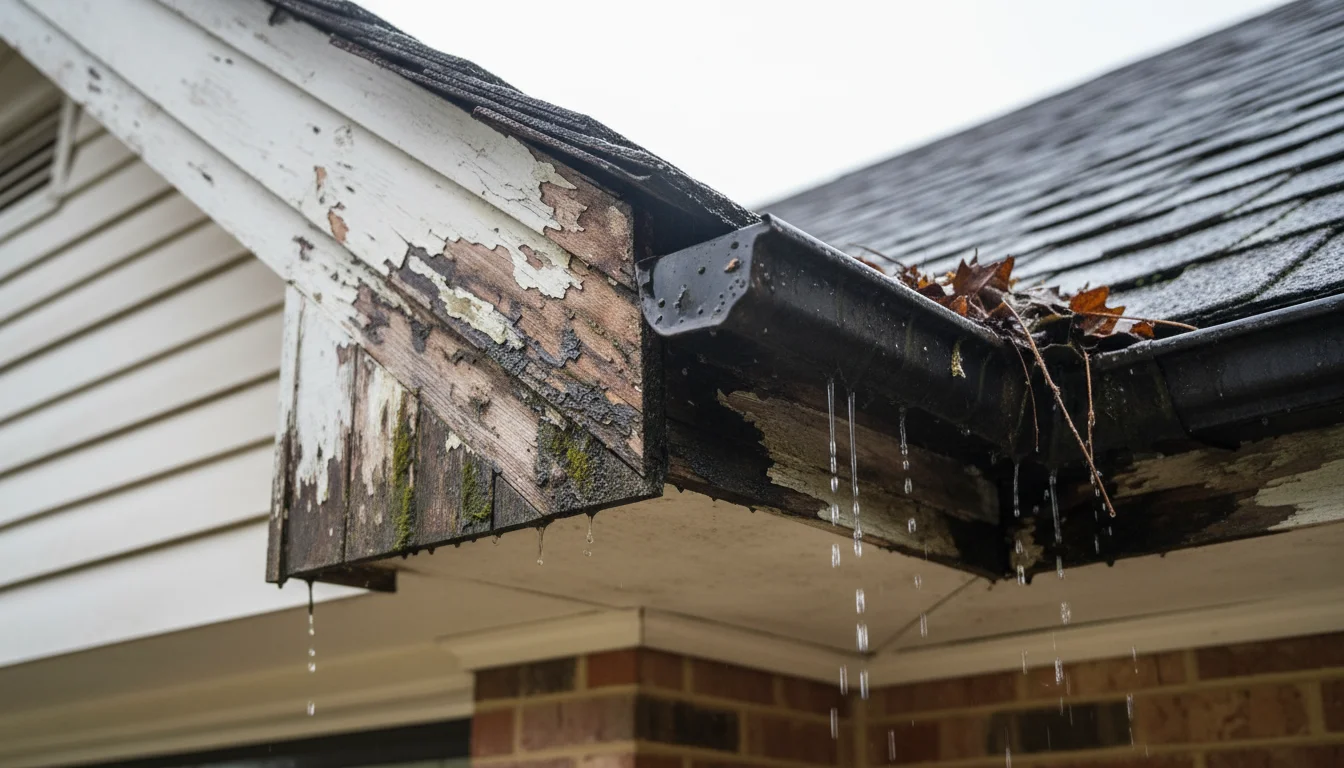
Preventing Roof Damage and Rot
Clogged gutters also pose a direct threat to your roof. Standing water in gutters backs up under shingles, saturating the roof decking and fascia boards. This constant moisture promotes wood rot, mold, and mildew growth. These issues compromise the structural integrity of your roof, reducing its lifespan and requiring premature repairs or even a full replacement. According to experts at This Old House, neglecting gutters often leads to costly roof repairs that are entirely avoidable with routine maintenance.
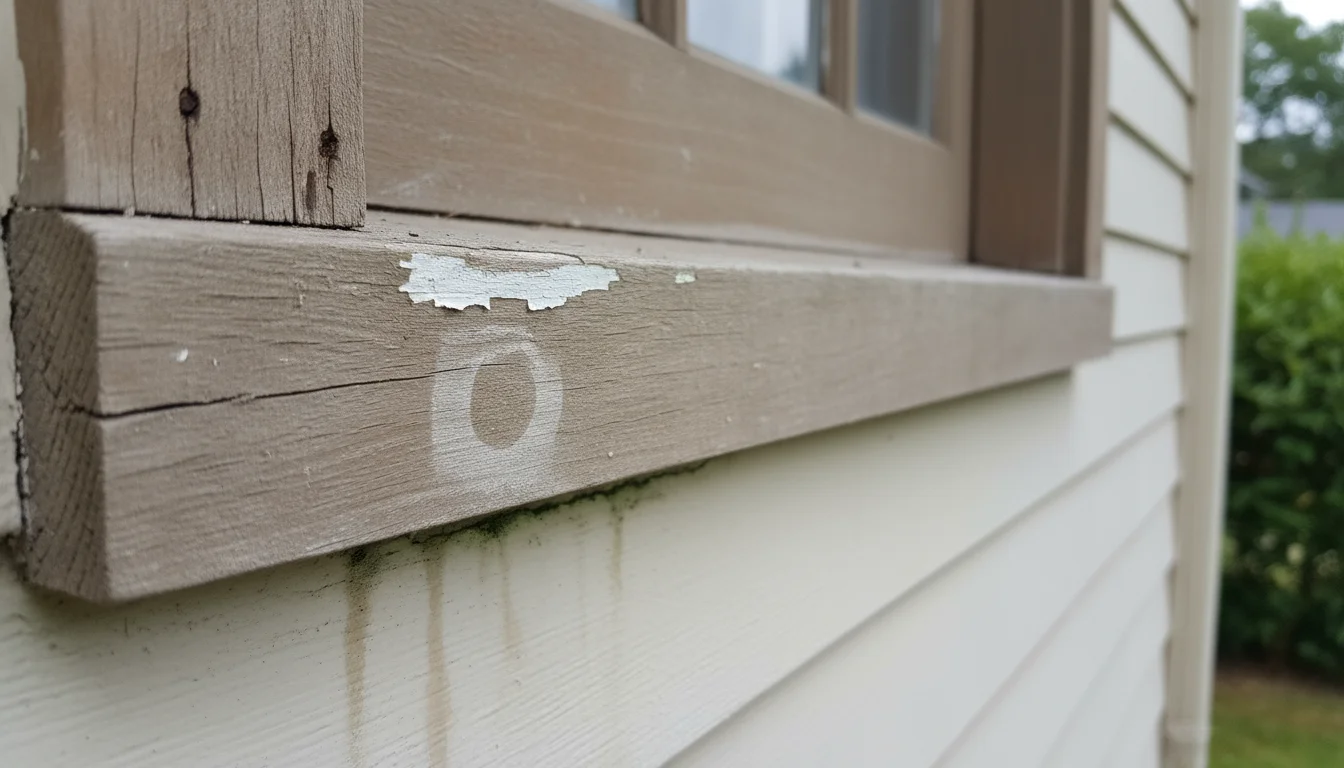
Guarding Against Siding and Window Damage
Overflowing gutters direct water onto your home’s siding and window frames. This constant exposure to moisture causes siding to warp, rot, or peel paint, especially with wood or composite materials. Water also seeps into window frames, leading to wood rot, sealant failure, and costly damage to your windows themselves. You prevent premature wear and tear on these exterior components by ensuring water flows freely through your gutters and downspouts.
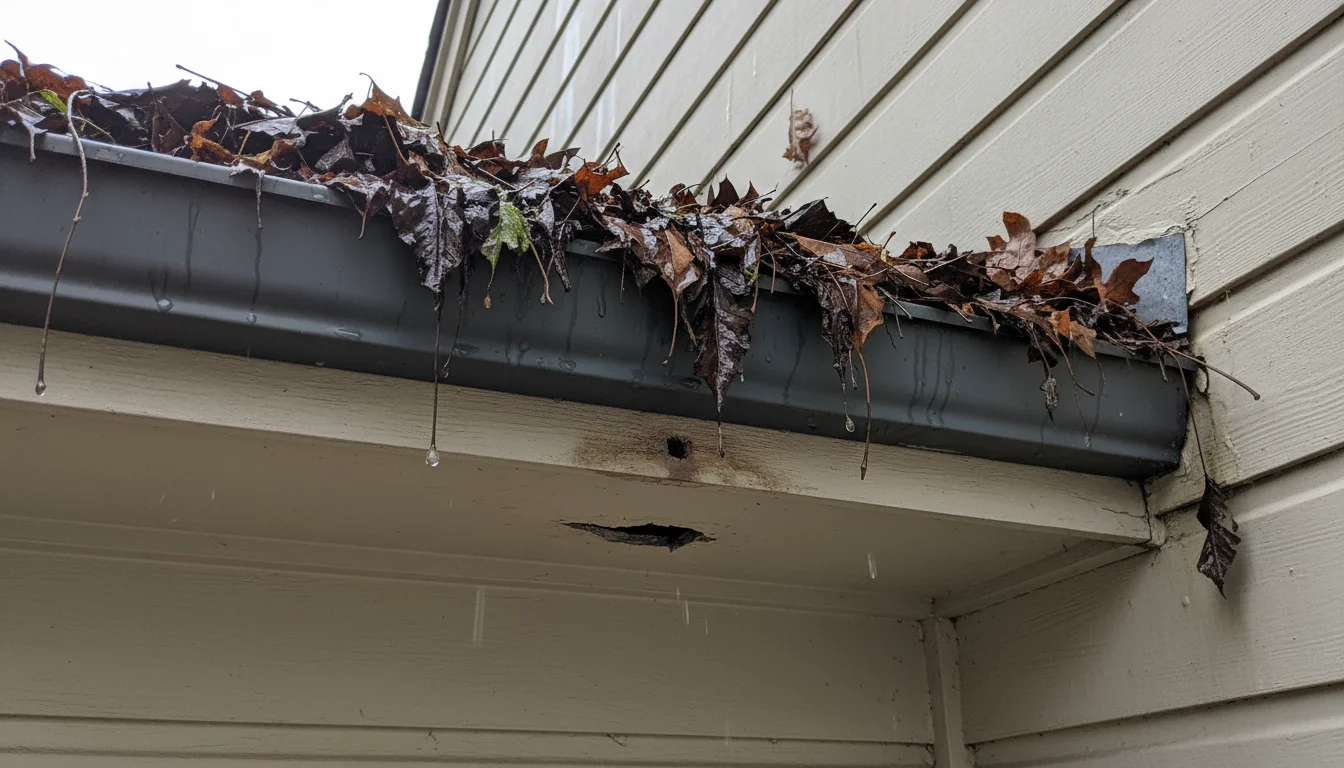
Avoiding Pest Infestations
Stagnant water and damp debris within clogged gutters create an ideal breeding ground and habitat for various pests. Mosquitoes lay eggs in standing water, increasing their population around your home. Rodents, insects, and birds find shelter and nesting material in leaf-filled gutters, often gaining easier access to your attic or eaves from this elevated position. Regular gutter cleaning removes these attractive habitats, helping to keep pests away from your home.

Preventing Ice Dams in Winter
During colder months, clogged gutters contribute to ice dam formation. Ice dams occur when heat escapes from your home, melting snow on the roof. This melted water then flows down to the cold eaves and gutters, where it refreezes. Clogged gutters trap this water, leading to larger, heavier ice dams that force water under your shingles and into your home. Ice dams cause significant damage to roofs, gutters, and interior ceilings, making proactive fall maintenance essential.

When to Clean Your Gutters: Timing Is Key
Knowing when to clean your gutters is almost as important as knowing how. The frequency depends largely on your local climate, the type of trees surrounding your home, and recent weather events. However, most homes benefit from a consistent schedule of at least twice a year. We will outline the optimal times for gutter cleaning, ensuring you catch debris before it causes problems.
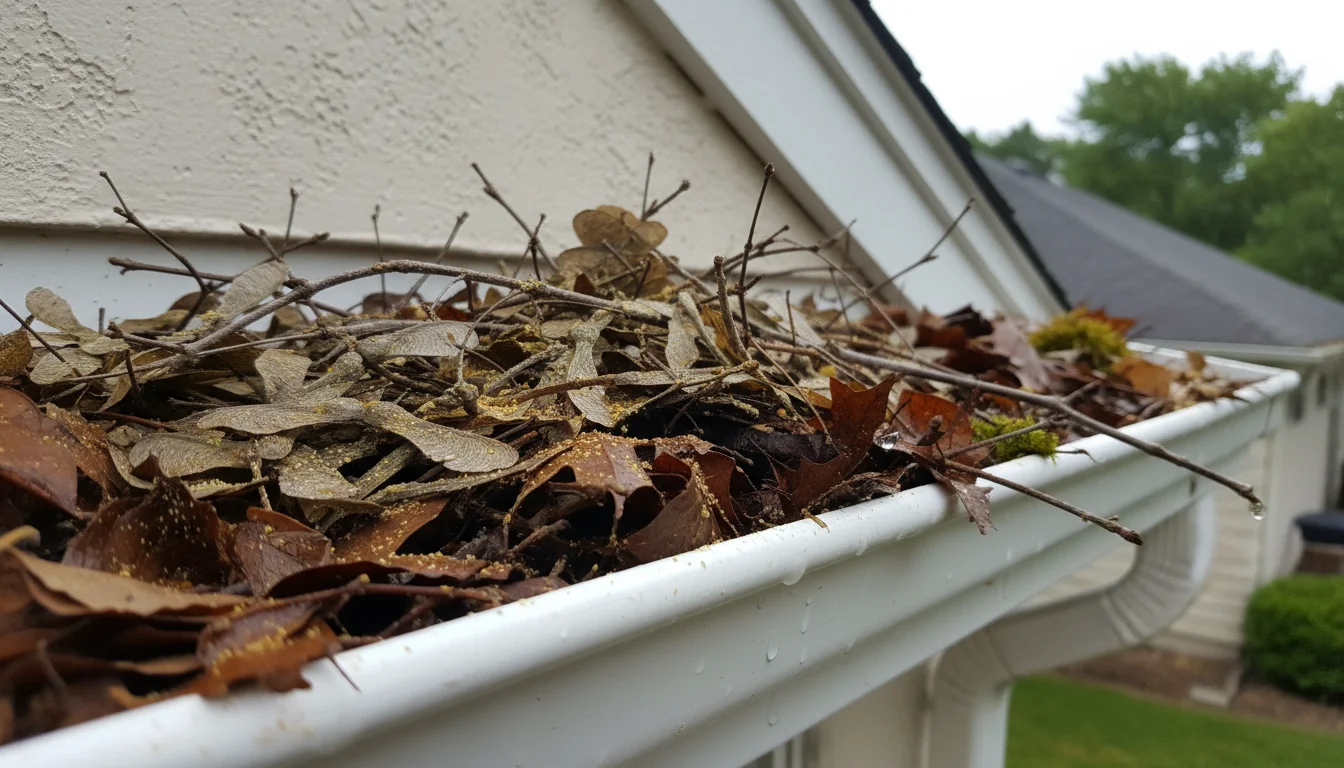
The Two Main Seasons for Gutter Cleaning
For most homeowners, two primary cleaning cycles effectively manage gutter health:
- Late Fall (After Leaves Have Fallen): This is arguably the most critical cleaning of the year. Deciduous trees shed their leaves en masse during autumn, and these leaves represent the primary source of gutter clogs. Waiting until most leaves have fallen prevents you from needing to clean multiple times throughout the fall season. Aim for late November or early December, once the trees are bare. This prepares your gutters for winter snow and ice, reducing the risk of ice dams.
- Late Spring (After Pollen and Spring Debris): After winter, your gutters accumulate grit, shingle granules, seed pods, and spring pollen. Trees also release small buds and “helicopters” (samaras) in spring, which quickly build up. A late spring cleaning, typically around April or May, clears out these lighter materials and ensures your gutters are ready to handle summer rains.
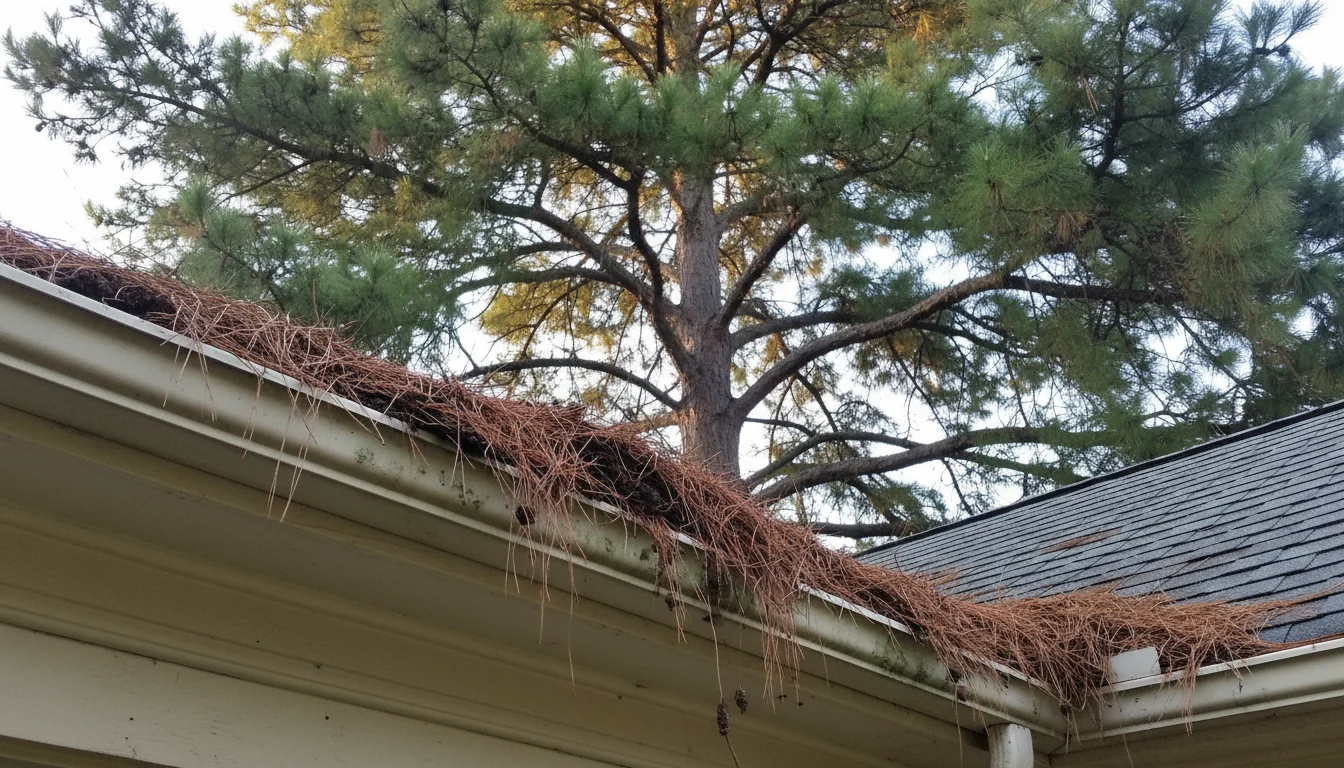
Factors That Increase Cleaning Frequency
While twice a year serves as a good baseline, specific factors might require more frequent gutter cleaning:
- Proximity to Trees: If your home sits directly under or very close to several mature trees, especially oak, maple, or pine trees, you might need to clean your gutters three or even four times a year. Pine needles, for example, clog gutters quickly and compact tightly.
- Major Storms: After heavy winds, thunderstorms, or significant rainfall, always inspect your gutters. Storms often dislodge large amounts of debris, twigs, and even small branches, creating immediate blockages. A quick check and clean after such events prevent potential overflow issues.
- Gutter Guards (Still Need Cleaning): Even if you have gutter guards, regular inspections are crucial. Some guards prevent large debris but still allow smaller particles, grit, or shingle granules to accumulate over time. You might clean less frequently, but you do not eliminate the need for occasional maintenance.
You can also perform a visual inspection from the ground. If you see leaves spilling over, hear water sloshing, or notice streaks of dirt on your siding, it is time for a clean, regardless of the season.
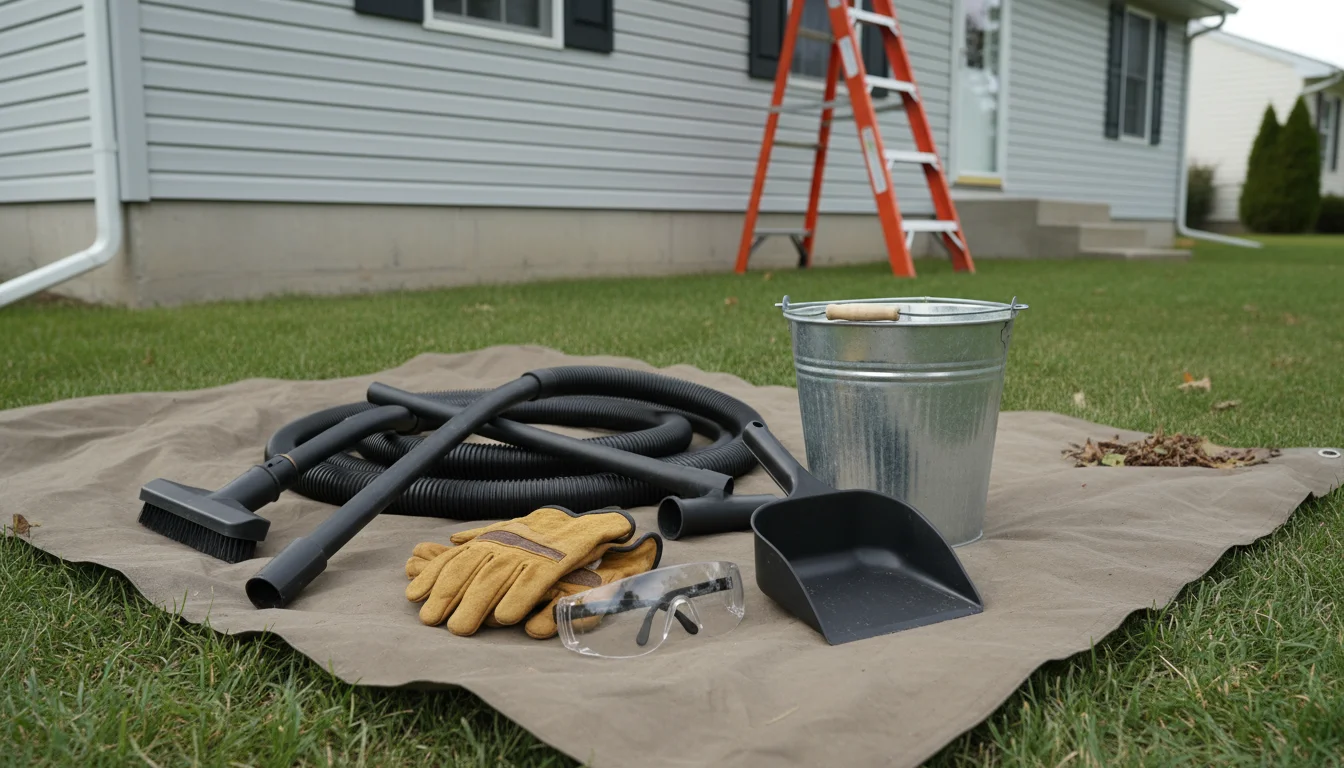
Essential Tools and Safety Gear for Gutter Cleaning
Approaching gutter cleaning with the right tools and, more importantly, the correct safety gear makes the job easier, more efficient, and significantly safer. Do not underestimate the importance of safety when working at heights. Investing in quality equipment and taking precautions protects you from injury.
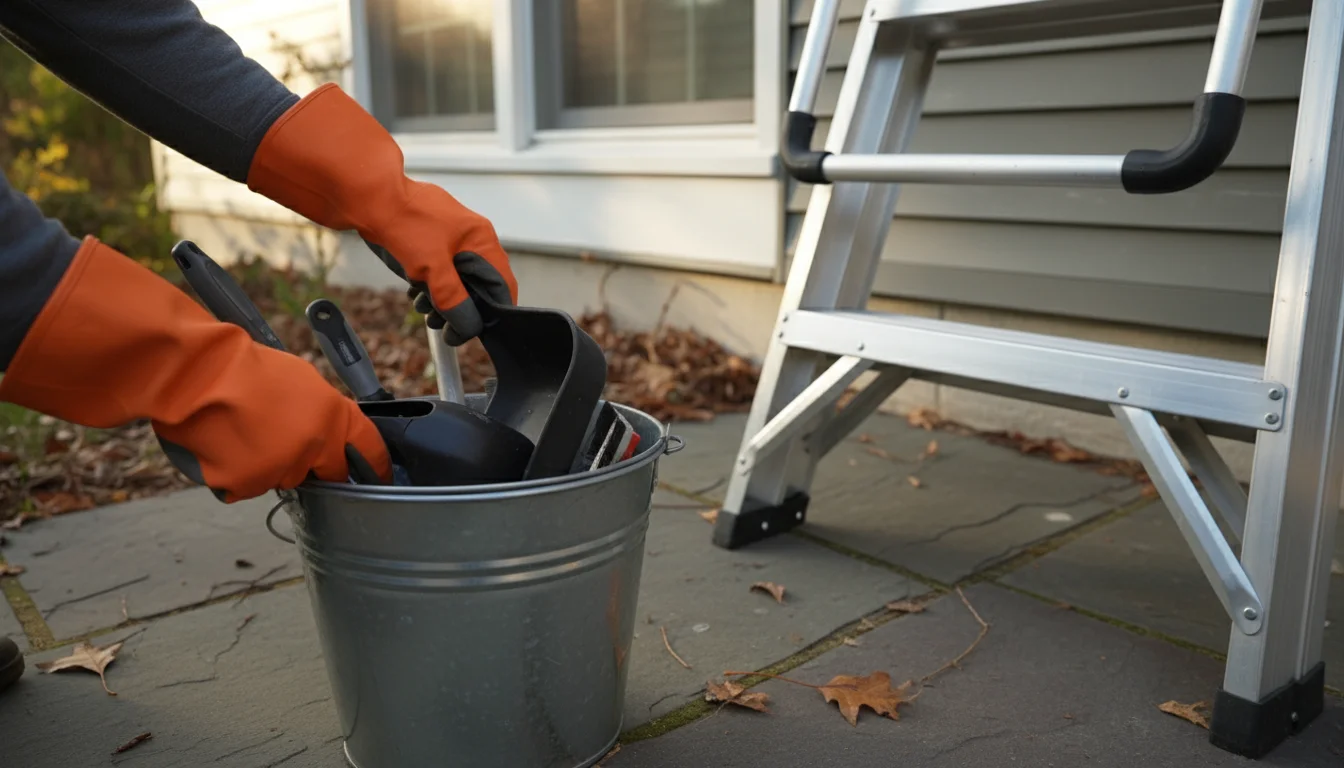
Must-Have Tools for the Job
- Sturdy Ladder: A robust extension ladder or a stable A-frame ladder is non-negotiable. Ensure it extends high enough to reach your gutters safely, allowing you to work comfortably without overreaching. A ladder stabilizer or stand-off bar provides extra stability and prevents damage to your gutters.
- Heavy-Duty Gloves: Protect your hands from sharp debris, grime, and potential bacteria. Look for thick, waterproof gloves with good grip.
- Gutter Scoop: This specialized tool features a narrow, curved design perfectly shaped to fit into gutters, making scooping out wet, mucky debris much easier than using your hands or a small trowel.
- Bucket or Tarp: Keep a bucket hanging from your ladder or place a large tarp on the ground below to collect debris as you remove it. This simplifies cleanup and prevents debris from scattering across your yard.
- Garden Hose with a Nozzle: After removing the bulk of the debris, a hose helps flush out smaller particles and check downspouts for clogs. A spray nozzle with good pressure aids in dislodging stubborn grime.
- Safety Goggles or Glasses: Protect your eyes from falling debris, dust, and splashes of dirty water, especially when using a hose.
- Long Sleeves and Pants: Protect your skin from scrapes, irritants, and sun exposure.

Essential Safety Gear and Practices
- Ladder Safety First:
- Proper Placement: Place the ladder on firm, level ground. Use a ladder stabilizer if you have one. Ensure the ladder extends at least three feet above the roofline if you are getting onto the roof, or high enough that you do not need to stand on the very top rung.
- Angle: Maintain a 4:1 ratio. For every four feet of ladder height, the base should be one foot away from the wall.
- Secure It: Have someone “spot” the ladder for you if possible, especially if you work alone. Never overreach; reposition the ladder frequently.
- Inspection: Always inspect your ladder before use for any damage or loose components.
- Wear Appropriate Clothing: In addition to gloves and eye protection, wear sturdy, closed-toe shoes with good grip. Avoid loose-fitting clothing that could snag.
- Know Your Limits: If you have a multi-story home, a steep roof, or feel uncomfortable working at heights, hiring a professional is the safest and most practical option. Your safety is paramount.
- Avoid Power Lines: Be acutely aware of any overhead power lines. Maintain a significant distance from them and never use a metal ladder near power lines.
By preparing with the right tools and prioritizing safety, you transform gutter cleaning from a risky chore into a manageable and secure task, protecting both yourself and your home.

Step-by-Step Gutter Cleaning Process
With your tools and safety gear ready, you can now approach the actual gutter cleaning process methodically. Following these steps ensures you thoroughly clear your gutters and downspouts, preventing future clogs and potential damage.
- Prepare the Area:
- Move any outdoor furniture, potted plants, or delicate landscaping away from the foundation below the gutters. This protects them from falling debris and provides a clear work area.
- Lay a tarp on the ground directly below where you will work. This catches the debris you remove, making cleanup significantly easier.
- Set Up Your Ladder Safely:
- Place your ladder on firm, level ground. Use a ladder stabilizer or a helper to hold the base if available.
- Ensure the ladder extends at least three feet above the roofline if you need to access the roof, or provides stable footing for you to comfortably reach the gutters. Never stand on the top two rungs.
- Reposition the ladder frequently as you move along the gutter run. Avoid leaning too far to one side.
- Remove Large Debris Manually:
- Starting from one end of a gutter run, begin scooping out large leaves, twigs, and other solid debris using your gutter scoop or gloved hands.
- Place the scooped debris directly into your bucket, which you can hang from the ladder for convenience, or toss it onto the tarp below.
- Work in small sections, moving the ladder as needed to maintain a safe working position.
- Flush the Gutters with Water:
- Once you have removed all visible large debris, use your garden hose with a spray nozzle to flush the gutters. Start from the highest point of the gutter run (opposite the downspout) and work your way towards the downspout.
- The water stream washes away smaller grit, shingle granules, and remaining sludge. Watch the water flow; it should move freely towards the downspout without pooling.
- Check and Clear Downspouts:
- As you flush the gutters, observe the water coming out of the bottom of each downspout. It should flow freely and clearly.
- If water backs up or trickles out, you have a clogged downspout. A common trick for clearing minor downspout clogs is to direct the hose nozzle directly into the top of the downspout with strong water pressure.
- For stubborn clogs, you might need a plumber’s snake or to remove sections of the downspout to clear the blockage. Tap gently on the downspout with a rubber mallet to dislodge debris.
- Inspect and Repair:
- While you are up close, inspect your gutters for any signs of damage: sagging sections, loose hangers, rust spots, or separating seams.
- Make minor repairs if you feel comfortable, such as tightening hangers or sealing small holes with gutter sealant. For significant damage or widespread issues, plan for professional repair.
- Clean Up:
- Gather all the debris from your tarp and dispose of it appropriately (compost, yard waste bag).
- Rinse down any splashes on your siding or windows.
- Clean and store your tools for the next use.
By following these steps, you perform a thorough and effective gutter cleaning, ensuring your home remains protected from water damage.

Choosing Between DIY and Professional Gutter Cleaning
The decision to clean your gutters yourself or hire a professional often comes down to a balance of time, budget, and safety considerations. Both options offer distinct advantages. Understanding these helps you make the best choice for your specific circumstances and home.
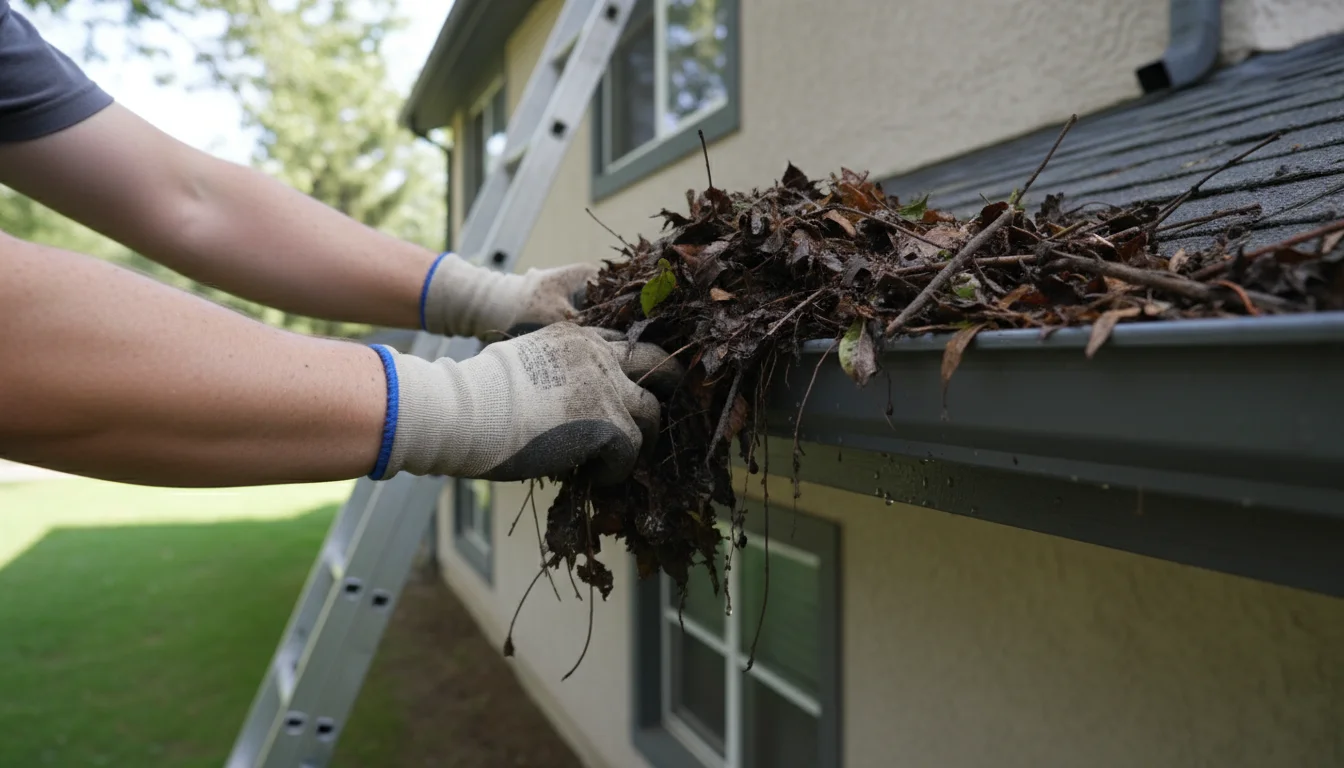
The DIY Approach: Pros and Cons
Cleaning your gutters yourself offers several compelling benefits:
- Cost Savings: This is the most obvious advantage. You eliminate labor costs, paying only for tools and your time. For budget-conscious homeowners, DIY cleaning presents a significant saving.
- Control and Flexibility: You control the timing and thoroughness of the job. You can clean exactly when you need to and inspect your gutters closely for minor issues.
- Sense of Accomplishment: Successfully completing home maintenance tasks fosters a sense of pride and connection to your home.
However, DIY gutter cleaning also comes with potential drawbacks:
- Safety Risks: Working on ladders involves inherent risks, especially at heights. Falls cause serious injuries. This is the primary concern for many homeowners.
- Time and Effort: Gutter cleaning takes time and physical effort, often more than you anticipate. If you have a busy schedule, this chore might feel overwhelming.
- Proper Equipment: You need a sturdy ladder and the right tools. If you do not already own these, the initial investment can offset some of the cost savings.
- Limited Access: Some homes have very high or difficult-to-access gutters, making DIY cleaning impractical or unsafe.

Hiring a Professional: Pros and Cons
Engaging a professional gutter cleaning service offers peace of mind and convenience:
- Safety: Professionals are experienced in working at heights and use specialized safety equipment. You eliminate the risk of personal injury.
- Expertise and Efficiency: They possess the knowledge and tools to quickly and thoroughly clean gutters and downspouts, identify potential problems, and often perform minor repairs on the spot.
- Time Savings: You free up your valuable time for other activities, knowing the job is in capable hands.
- Insurance: Reputable companies carry liability insurance, protecting you in case of accidental property damage or worker injury.
The main considerations for professional services are:
- Cost: Professional services naturally come with a cost, typically ranging from $100 to $250 or more, depending on your home’s size and the extent of the work. This might not fit every budget.
- Scheduling: You need to coordinate with the service provider’s schedule, which might require some flexibility on your part.
When is hiring a professional the best option? If your home has multiple stories, a steep roof, difficult-to-access gutters, or if you simply do not feel comfortable working on a ladder, a professional service is a smart investment. As noted by Bob Vila, hiring professionals for tasks like gutter cleaning protects both your home and your personal safety.
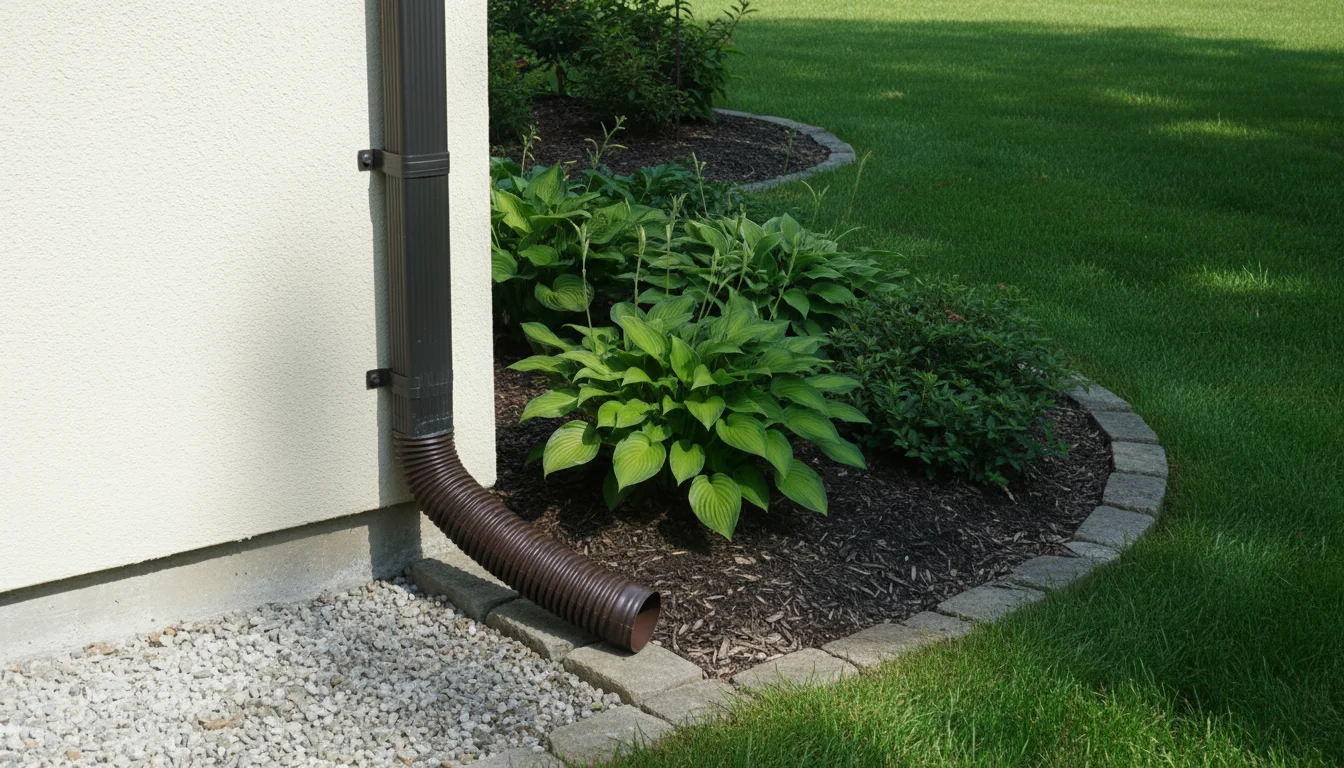
Gutter Maintenance Tips and Long-Term Care
Beyond regular gutter cleaning, implementing smart gutter care tips and maintenance strategies extends the life of your system, reduces cleaning frequency, and provides long-term protection for your home. Proactive measures often prevent larger, more expensive problems down the line.

Consider Gutter Guards
Gutter guards (also known as gutter covers or screens) are physical barriers installed over your gutters designed to prevent large debris from entering. They come in various types:
- Mesh Screens: These are the most common and budget-friendly. They keep out leaves and larger debris but might still allow smaller grit, shingle granules, or pine needles to accumulate.
- Surface Tension/Reverse Curve: These designs use the principle of surface tension to guide water into the gutter while leaves and debris fall off. They are more effective but also more expensive.
- Fine Micro-Mesh: These offer the best protection, blocking almost all debris, including shingle grit. They are the most costly but significantly reduce cleaning needs.
While gutter guards do not eliminate the need for occasional inspection and cleaning (especially around downspouts), they drastically reduce how often you need to perform full cleanouts. This Old House experts often recommend them for homes with heavy tree coverage. Evaluate the cost, effectiveness, and maintenance requirements for each type before investing.

Regular Visual Inspections
Make it a habit to visually inspect your gutters from the ground regularly, especially after heavy storms or strong winds. Look for:
- Overflowing Water: Does water spill over the sides during rain?
- Sagging Gutters: Are there any sections that appear to be pulling away from the fascia?
- Downspout Flow: Does water emerge from the downspouts freely, or is it merely a trickle?
- Debris Buildup: Can you see significant leaf accumulation?
These quick checks help you catch minor issues before they escalate into major problems, informing your fall maintenance schedule.

Trim Overhanging Branches
Trees directly overhanging your roof are the biggest contributors to gutter debris. Regularly trim any branches that extend close to or over your roofline. This reduces the amount of leaves, twigs, and sap falling into your gutters. Trimming trees also prevents branches from scraping against your roof, potentially damaging shingles, and minimizes squirrel and rodent access to your attic. According to Family Handyman, proactive tree trimming is a fundamental aspect of effective gutter care.
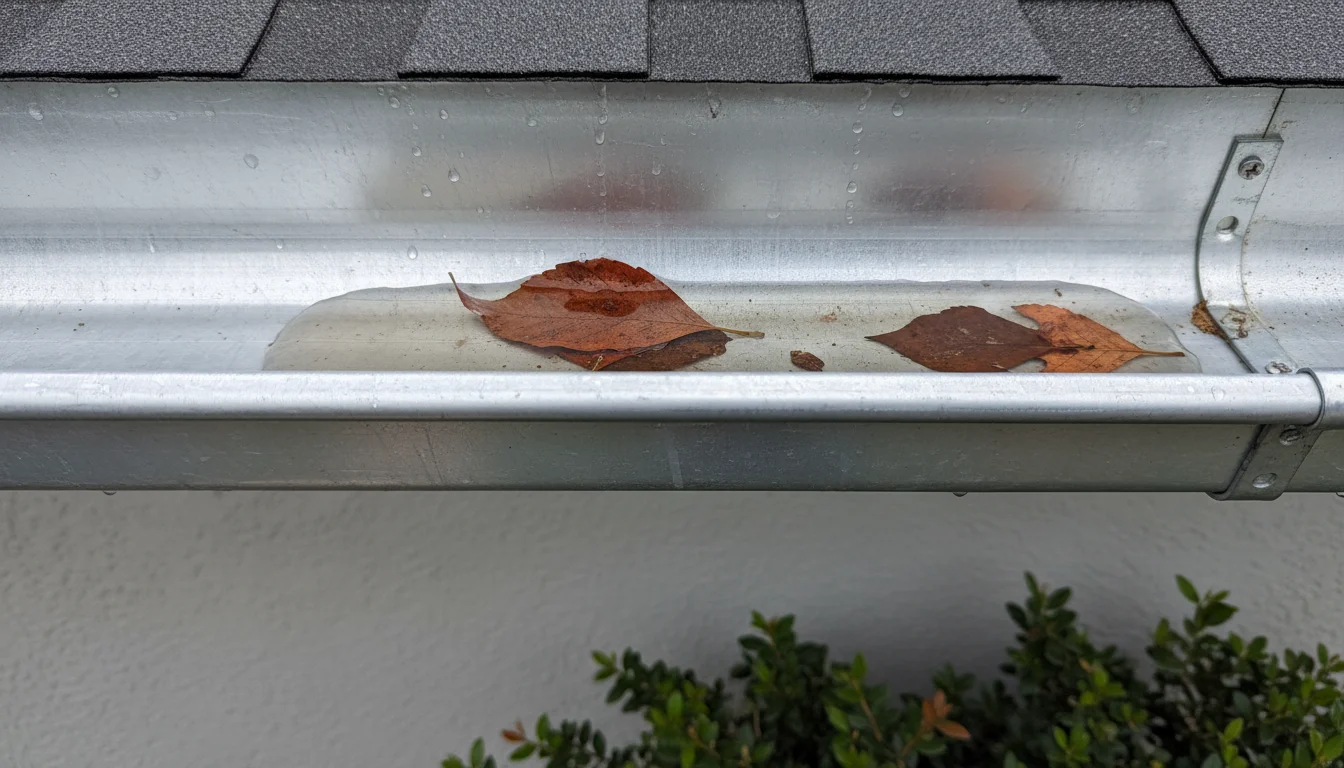
Ensure Proper Gutter Pitch
Gutters need a slight pitch, or slope, towards the downspouts to allow water to drain efficiently. The recommended pitch is typically about one-quarter inch per 10 feet of gutter. If your gutters appear flat or have areas where water consistently pools, they might lack the proper slope. You or a professional can adjust the hangers to correct the pitch, ensuring smooth water flow and preventing standing water that encourages debris buildup and mosquito breeding.

Keep the Roof Clean
A clean roof means less debris making its way into your gutters. Regularly sweep or blow off loose leaves and debris from your roof, especially after storms. Be extremely cautious when working on your roof, or hire a professional for this task.
By integrating these ongoing gutter care tips into your home maintenance routine, you extend the life of your gutter system, reduce the frequency of demanding cleaning tasks, and provide continuous protection for your home.

Troubleshooting Common Gutter Problems
Even with regular cleaning and maintenance, your gutters might encounter specific issues. Knowing how to identify and address common gutter problems saves you time, money, and prevents minor annoyances from becoming major headaches. We will cover some typical problems and offer actionable troubleshooting steps.
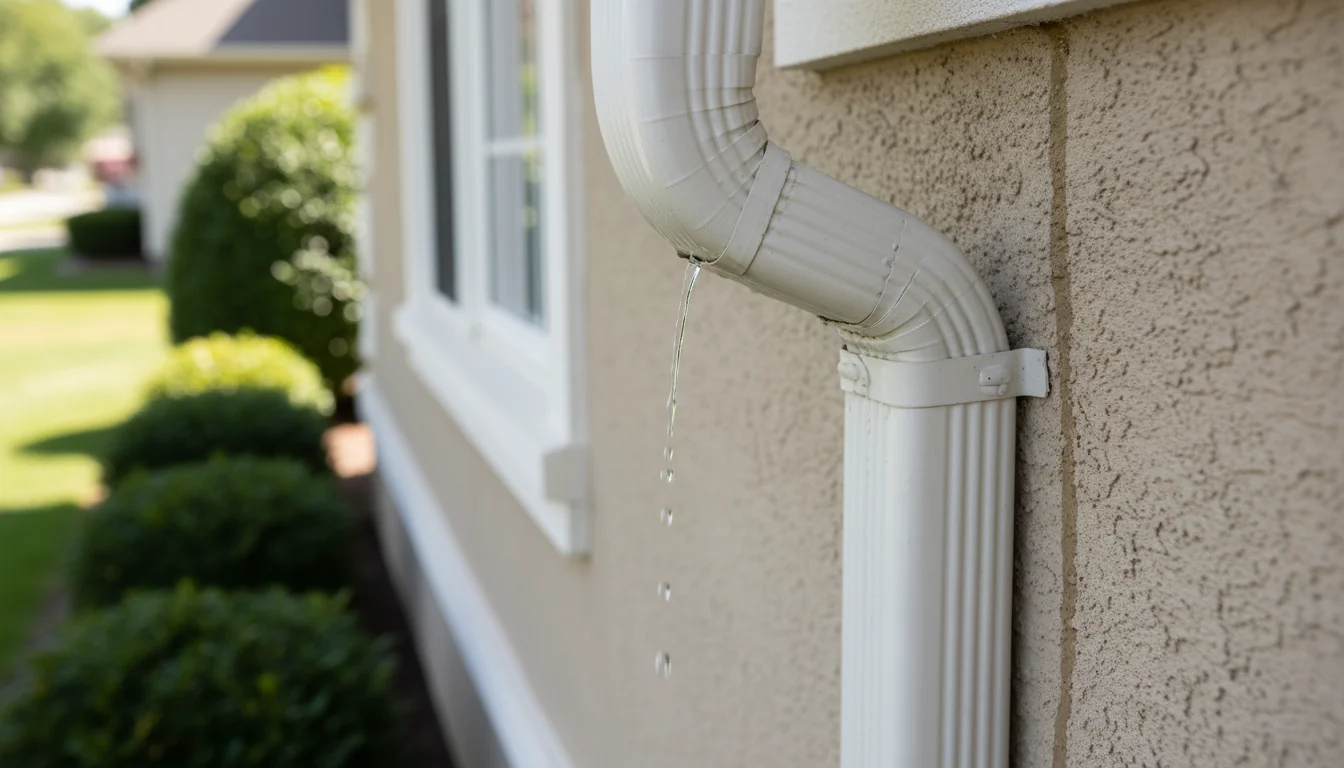
Problem 1: Leaking Gutter Seams
Identification: You see water dripping or streaming from the joints where gutter sections meet.
Troubleshooting:
- Clean and Seal: First, clean the gutter thoroughly around the leaky seam. Remove all debris, old caulk, and grime.
- Re-seal: Apply a high-quality gutter sealant (often silicone-based) specifically designed for gutters. Ensure the area is dry before application. For a temporary fix, you can also use roofing cement.
- Check for Damage: If the seam is significantly separated or rusted, sealing might only be a temporary solution. You might need to reinforce the seam with a gutter patch or replace the section.
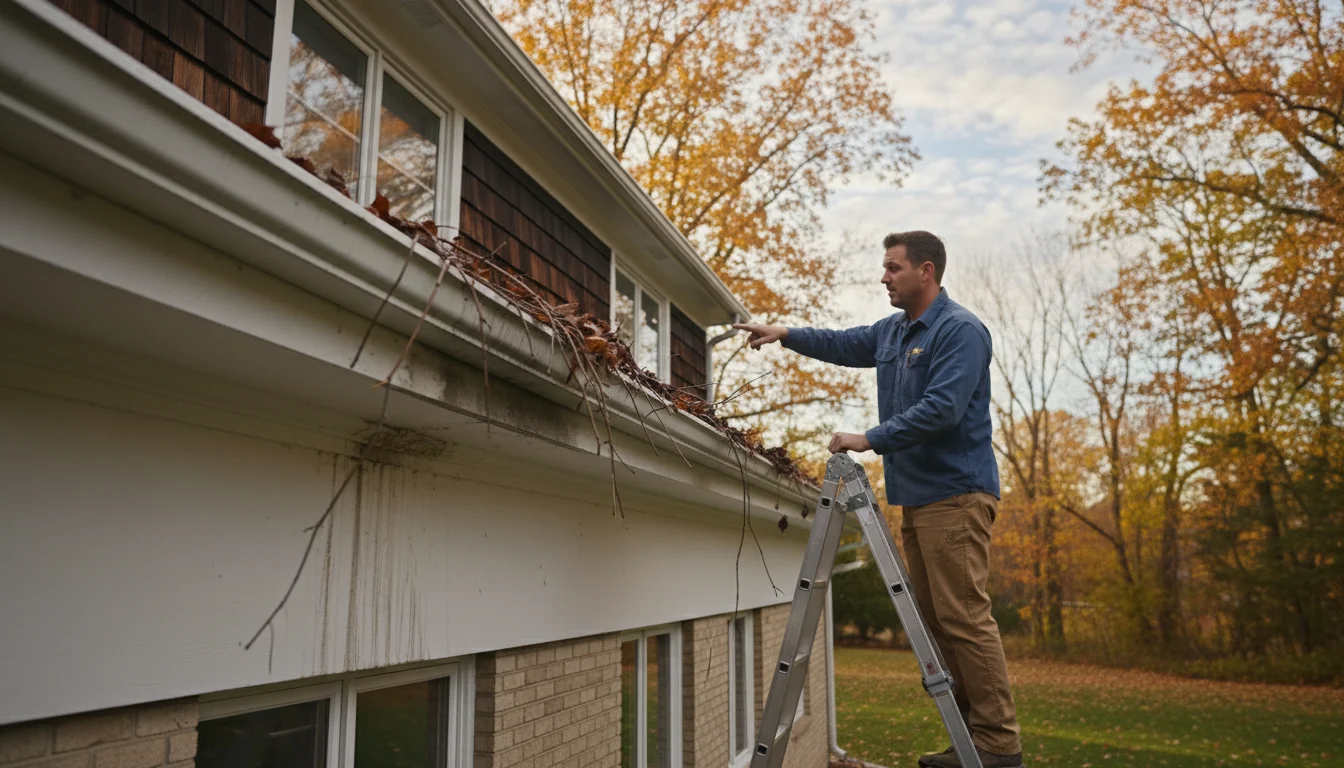
Problem 2: Sagging Gutters
Identification: Sections of your gutter appear to be drooping or pulling away from the fascia board. They might also hold standing water.
Troubleshooting:
- Examine Hangers: Sagging often occurs when gutter hangers are loose, bent, or spaced too far apart. Ensure hangers are securely attached to the fascia. Add additional hangers every 2-3 feet if necessary, especially if heavy ice or debris caused the sag.
- Check Fascia Board: If the hangers are pulling out of the fascia, the wood behind them might be rotted. You must repair or replace the rotted fascia before reattaching the gutter.
- Clear Clogs: Persistent clogs cause sagging over time due to the weight of water and debris. Clear any blockages completely.
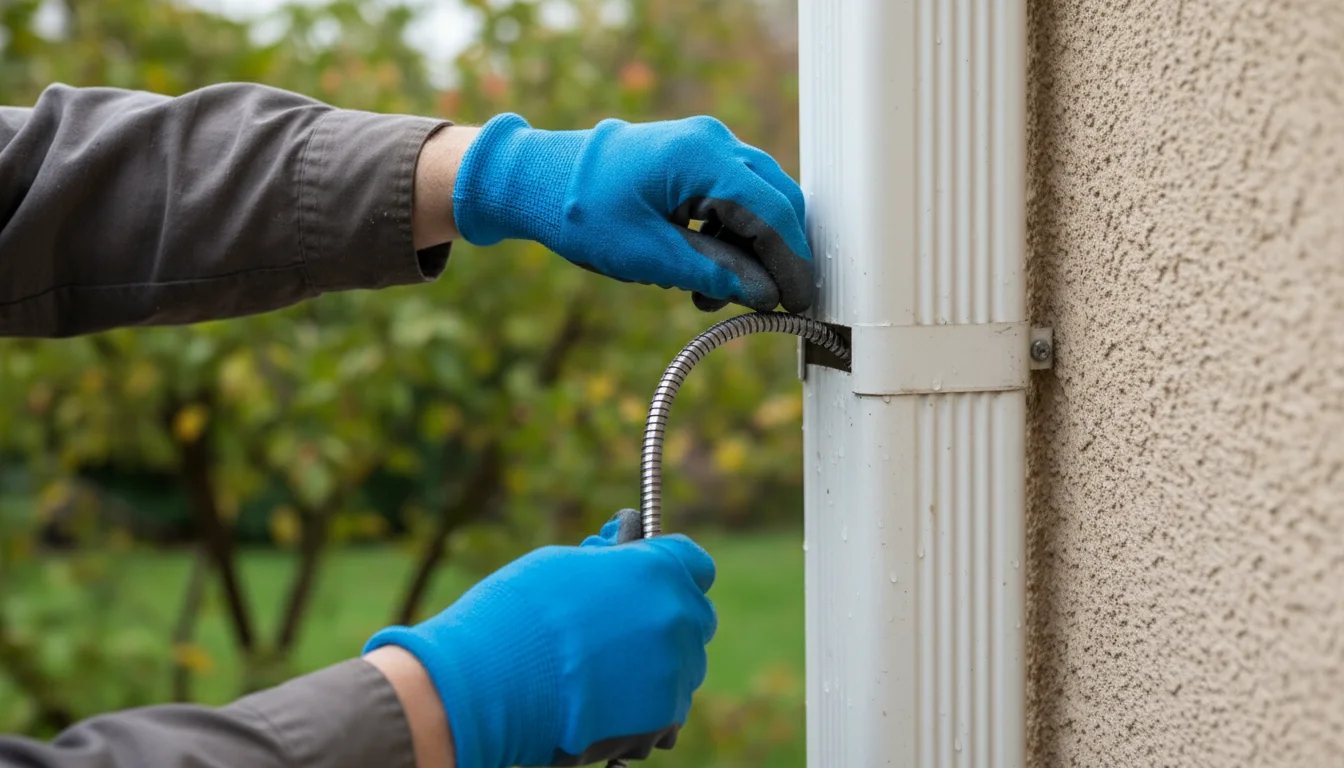
Problem 3: Clogged Downspouts
Identification: Water overflows from the gutter directly above the downspout, or no water exits the downspout during rain.
Troubleshooting:
- Flush from Above: Use a garden hose with high pressure to flush water down the downspout from the top. This often dislodges minor clogs.
- Use a Plumber’s Snake: For stubborn clogs, a plumber’s snake (auger) can effectively break up and push out debris. Carefully feed the snake down the downspout.
- Remove Downspout Sections: For severe clogs, you might need to detach sections of the downspout, starting from the bottom, to manually clear the blockage. Reattach securely afterwards.
- Check Elbows: Elbows in the downspout often become choke points for debris. Pay extra attention to these areas.

Problem 4: Gutter Overflow (Even When Clean)
Identification: Your gutters are clean, but water still overflows, especially during heavy rainfall.
Troubleshooting:
- Improper Pitch: Your gutters might not have the correct slope towards the downspouts. Use a level to check the pitch (1/4 inch per 10 feet is ideal). Adjust hangers to correct the slope.
- Too Small Gutters: Your gutters might simply be too small for the amount of rainfall your roof collects, especially if you have a large roof area or live in a high-rainfall climate. This is a more significant issue requiring professional assessment for larger gutters or additional downspouts.
- Downspout Spacing: You might not have enough downspouts for your roof area. Adding an additional downspout can improve drainage capacity.
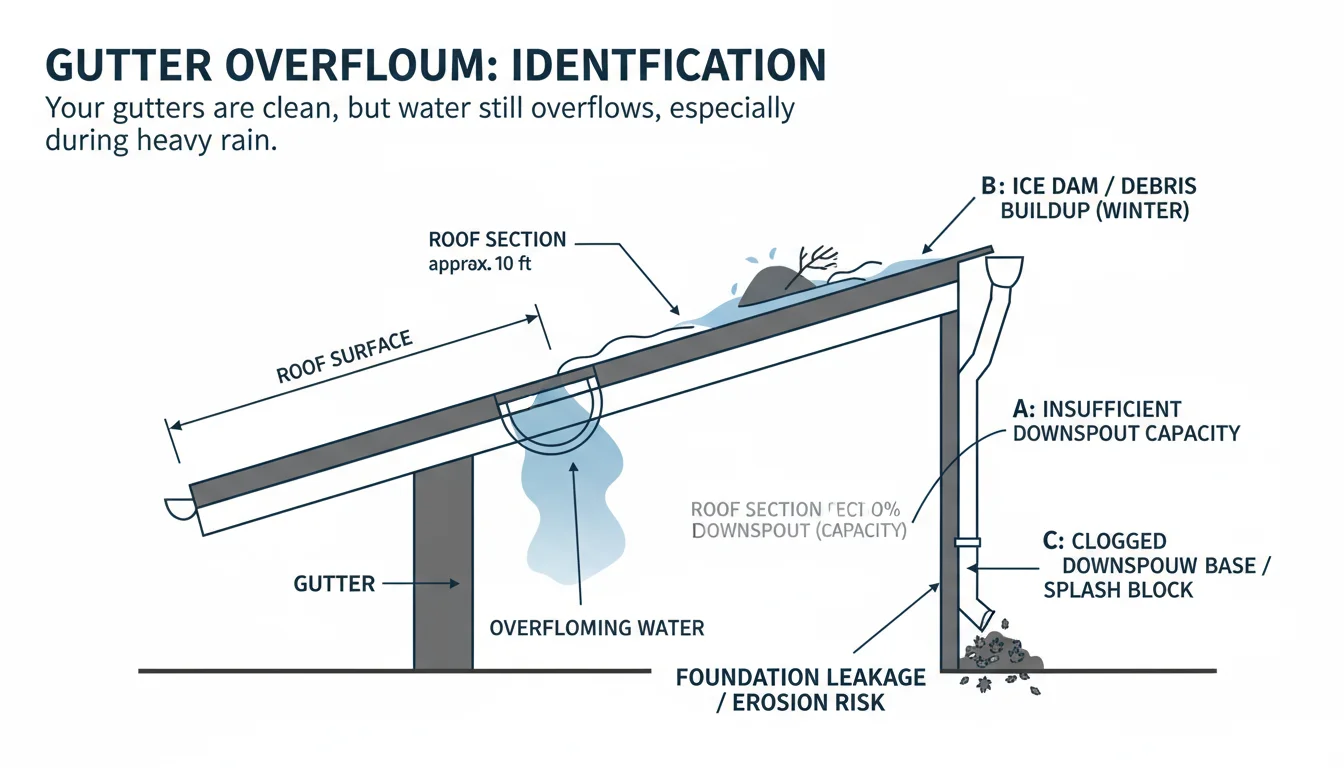
Addressing these common gutter problems proactively ensures your system functions correctly and continues to protect your home. If a problem seems beyond your comfort level or expertise, do not hesitate to consult a gutter repair professional.

Frequently Asked Questions
How often should I clean my gutters?
Most homes require gutter cleaning at least twice a year: once in late fall after most leaves have fallen, and again in late spring to clear out spring debris like seed pods and pollen. If your home has many trees nearby, especially pine trees, you might need to clean them three or four times a year, or after major storms.
Can I clean gutters from the ground?
While various gutter cleaning tools attach to garden hoses or shop vacuums to reach gutters from the ground, they often do not provide the thoroughness or visual inspection that cleaning from a ladder offers. They might miss compacted debris or fail to clear stubborn downspout clogs. Use these tools for light maintenance between full cleanings, but do not rely on them for comprehensive gutter care.
Are gutter guards worth the investment?
Gutter guards are a worthwhile investment for many homeowners, especially those with heavy tree coverage. They significantly reduce the frequency of gutter cleaning by preventing large debris from entering. While they do not eliminate cleaning entirely, they make the process much quicker and easier when it is needed. Consider the type of guard that best suits your budget and debris type.
What if I have really high gutters or a steep roof?
If your home has multi-story gutters, a steep roof, or other challenging access points, prioritize your safety over DIY savings. Hiring a professional gutter cleaning service is the safest and most efficient solution. They possess the proper equipment, training, and insurance to handle complex jobs safely.
What happens if I neglect gutter cleaning?
Neglecting gutter cleaning leads to severe and costly problems. These include water damage to your home’s foundation, basement leaks, wood rot in fascia boards and roof eaves, damaged siding and windows, pest infestations (mosquitoes, rodents), and the formation of destructive ice dams in winter. Regular cleaning prevents these issues, protecting your property value and comfort.
Maintaining clean gutters is a critical yet often overlooked aspect of home care. While it might seem like a chore, the benefits of preventing water damage, protecting your foundation, and preserving your home’s integrity far outweigh the effort. By understanding when to clean, using the right tools safely, and adopting proactive maintenance habits, you keep your gutters functioning flawlessly. Whether you choose to tackle the job yourself or opt for professional help, prioritizing clear gutters is a smart investment in your home’s long-term health and your peace of mind.
For expert home organization guidance, visit
Good Housekeeping — Organization, Better Homes & Gardens — Home Organization and EPA — Indoor Air Quality.
Disclaimer: This article is for informational purposes only and is not a substitute for professional advice. Consult professional organizers or specialists for personalized recommendations.








Leave a Reply